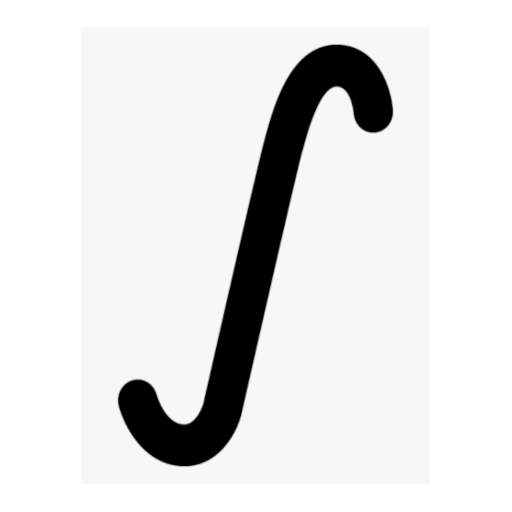- Show that
cosθ=(u⋅v)/(|u||v|)for 2D vectors u and v.
(it is quite hard to come up with these challenges, so if you got any ideas, please post them)
Just a note: I’m afraid I don’t have any challenge to offer (but I’ll try to find something even if it feels inadequate given the quality offered here). Just know that I’m very grateful for the posts, they are always great
Aye, seconded; I’d like to also add in my normally-silent-upvote of these posts. They’re a really neat idea and I’m fine myself continually looking forward to each next one.
solution
I’m sure there’s some short elegant solution here that uses beautiful vector math. Instead I went for the butt ugly coordinate geometry solution.
Let u = <a, b> and v = <c, d>
See diagram. WLOG, assume u has a smaller angle than v. We can find cos(θ) by constructing a right triangle as shown, and by finding a new vector w, in the same direction as u, which has the correct length to complete our right triangle. Once done, we will have cos(θ) = |w| / |v|.
Let’s consider each vector to be anchored at the origin. So we can say u lies on the line y = (b/a)x, and v lies on the line y = (d/c)x. To find w, let us first find z - the third side of the triangle, which we know must be perpendicular to u, and pass through (c, d).
The line perpendicular to y = (b/a)x and passing through (c, d) is y = (-a/b)(x-c) + d. So this is the line containing the third side of our constructed triangle, z. To find w, then, let’s find its point of intersection with y = (b/a)x, the line containing w.
(b/a)x = (-a/b)(x-c) + d → Setup
(b/a)x = (-a/b)x + (ca/b) + d → Distribute on right
x(b/a + a/b) = (ca/b) + d → Add (a/b)x to both sides, factor out x on left
x(a² + b²) = ca² + dab → Multiply both sides by ab
x = (ca² + dab) / (a² + b²) → Divide both sides by (a² + b²)
x = (ca² + dab) / |u|² → a² + b² is |u|²
y = (b/a)x = (b/a)(ca² + dab) / |u|² → Plug solution for x into (b/a)x, don’t bother simplifying as this form is useful in a moment
So w = <(ca² + dab) / |u|², (b/a)(ca² + dab) / |u|²>. Now we need |w|.
|w| = sqrt((ca² + dab)² / |u|⁴ + (b²/a²)(ca² + dab)² / |u|⁴) → Plugging into normal |w| formula
|w| = sqrt(((ca² + dab)² / |u|⁴) * (1 + b² / a²)) → Factor out (ca² + dab)² / |u|⁴
|w| = (ca² + dab) / |u|² * sqrt(1 + b² / a²) → Pull (ca² + dab)² / |u|⁴ out of the root
|w| = (ca² + dab) / |u|² * sqrt((a² + b²) / a²) → Combine terms in root to one fraction
|w| = (ca² + dab) / |u|² * |u| / a → Evaluate sqrt
|w| = (ca + db) / |u| → Cancel out |u| and a from numerator and denominator
So this is the length of our adjacent side in the constructed right triangle. Finally, to find cos(θ), divide it by the length of the hypotenuse - which is |v|.
cos(θ) = |w| / |v| = (ac + bd) / (|u||v|)
And note that ac + bd is u•v. So we’re done.
cos(θ) = u•v / (|u||v|), or |u||v|cos(θ) = u•v.
Note that since this formula is symmetric with respect to u and v, our assumption that u’s angle was smaller than v’s angle did not matter - so this should hold regardless of which is larger.
A good exercise to dust off trig. Hopefully no typos involving u, v, 1, 2, α, and β.
Trigonometric solution
By definition of |u| and Pythagoras, we can see that u1 and u2 can represent the lengths the legs of a right triangle with |u| being the length of the hypotenuse. Similarly for v. The triangles can be visualized in the usual way by plotting the vectors in the XY plane centered at the origin, with u1 and v1 constituting the X coordinates and u2 and v2 the Y coordinates of u and v, respectively.
Let α and β be the respective angles that u and v make with the X-axis. Then, θ = β - α, and
u1 = |u| cos α
u2 = |u| sin α
v1 = |v| cos β
v2 = |v| sin β
Now consider the expression:
|u| |v| cos θ
= |u| |v| cos (β - α)
= |u| |v| (cos β cos α + sin β sin α) (cosine angle difference formula)
= (|u| |v| cos β cos α) + (|u| |v| sin β sin α) (distribute)
= (|u| cos α)(|v| cos β) + (|u| sin α)(|v| sin β) (commutativity, associativity)
= (u1)(v1) + (u2)(v2) (substituting)
= u • v (definition)
::: spoiler visible text spoilered invisible text :::visible text
spoilered invisible text
much obliged
Making one additional note here, because of your parenthetical message, letting you know that my short backlog of problems I found interesting has actually run dry with the last one I posted - so my series is unfortunately on hiatus. I’ll still post if I come across other interesting problems but that honestly doesn’t happen too often - even the ones I have posted were collected (and saved by a friend) over several years.
Here’s a rly cool solution from stackexchange, which blows my average geometric solution out of the water
spoiler

deleted by creator


